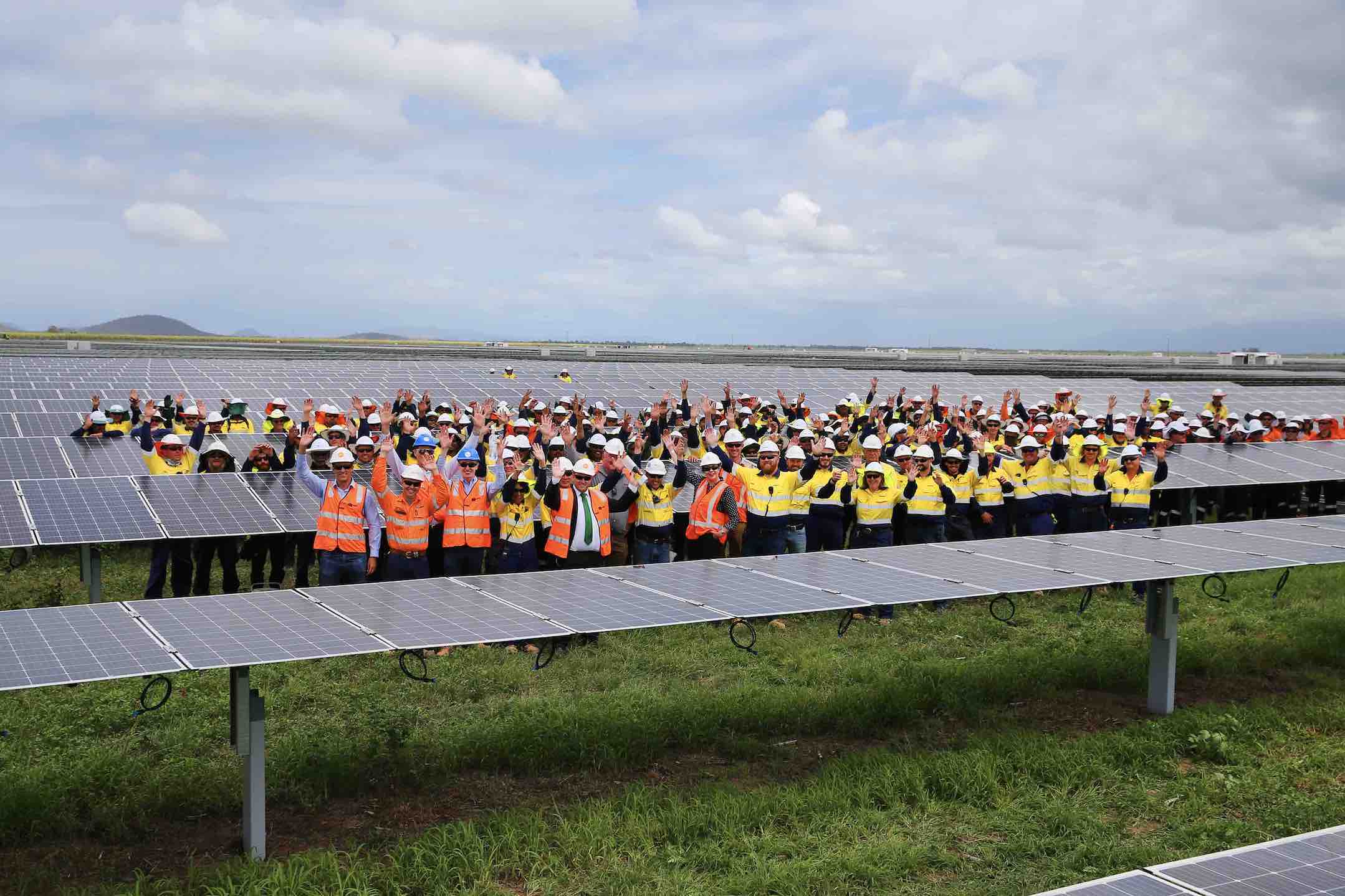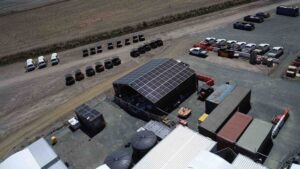Leading engineering and contracting firm Downer Group has become the latest contractor to admit to suffering losses on the construction of large-scale solar projects, and has pointed to the major risks associated with negotiating the final connection agreements with network owners and the market operator.
Downer last week confirmed it had suffered a loss from the 100MW Clare solar farm, believed to be more than $10 million in the first half. It is one of three solar projects it has been building in Queensland – along with the Ross River and the Sunshine Coast solar farms.
It follows the collapse of one of Downer’s big rivals – RCR Tomlinson – following that company’s write-down of $57 million because of cost over-runs at Hayman and Daydream, and the loss of cash flow caused by connection delays at a number of different projects. The RCR solar business has since been closed down.
Connection delays – which have afflicted nearly every new wind and solar project in the main grid over the last year or so – have also caused losses and penalty payments elsewhere, including Neoen’s three solar farms in western NSW, at the Gullen Range solar farm near Goulburn, and elsewhere.
The connection delays appears to be due to a combination of factors: the overwhelming number of new projects; the number of new personnel; the relative newness of the technologies that has had an impact on network owners, the market operator and developers; and changes in the interpretation of connection requirements.
The latter factor has now become the biggest concern for developers of wind and solar projects, with many having to deal with newly interpreted reactive power requirements that require more inverter capacity, or face delays and or curtailment.
Insiders say the issue is complicated by the fact that initial connection agreements are vague, and changes are often being demanded by AEMO and network owners after detailed modelling is completed later in the process.
And the contractors are having to pick up the tab. They are calling for a more thorough analysis to be completed earlier in the piece, before the EPC contract is signed.
Grant Fenn, the CEO of Downer Group, pointed to those very connection issues as the greatest concern for companies like his, mostly because the EPC (building contractor) carries the risk, both in terms of any additional technology needed, and on the cost of delays in the process.
He said margins in his company’s Utilities division were hit by the “poor performance in our solar farm business”, although current projects are performing to budget.
“We’ve learnt a lot on this during the process, and the two solar farms that we have on deck at the moment, we are doing well on them,” Fenn told analysts on a conference call last week.
“What we have seen, though, is that over the period … the EPC risk on the solar includes taking connection risk, and your ability or the ease of connection has changed dramatically with all of the solar plants coming on deck.
“It’s meant that the grid in certain areas, where these have been put has become much more volatile, and that has created a lot more work for people like ourselves to get them connected.
“That’s an area that we’re looking very closely at, so you know, the future of risks we will take, you know, it’s very unlikely that we’ll be taking connection, risking anything further unless it’s very clear around the requirements for connection.
“So, we’re taking a pretty risk-averse position on the solar at the moment, the projects that we’re doing are going well but it’s you know, it’s a developing market that’s for sure.”
Downer is also building the Numurkah and Beryl solar farms (in Victoria and NSW, respectively) that Fenn said were “going OK’.
Downer also recently signed up to build Innogy’s Limondale solar farm, a 349MW facility in western NSW that could be the biggest solar project in the country – pending the final approval of rival projects. Interestingly, the contract is for construction only, and Downer is not taking the connection risk.
Last year, Fenn told analysts that building solar farms was not particularly difficult in and of itself, but the connection issues were. And this was complicated by the sheer number of new players in the market – Downer included. “Every man and his dog is in there trying to build these things,” Fenn said.
“It was the path that most of the industrial construction providers went to, where – when mining – when the mining boom ended and there wasn’t a lot of development in mine sites. Most people turned to these areas. There is a fair bit of competition in there.”
Happily for Downer, more renewables will mean more transmission lines. And the company builds those too.









